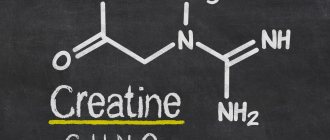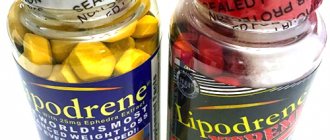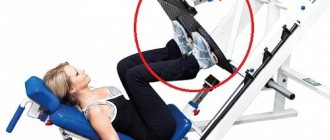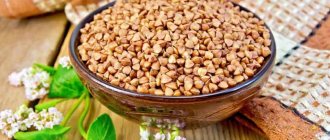© Maksym Yemelyanov — stock.adobe.com
Share:
Natural, doping-free sport is a whole science that requires maximum effort from gym visitors. Nutrition, including sports nutrition, plays a significant role in achieving results. And a striking example of the need to use dietary supplements in crossfit, bodybuilding and other sports are amino acid phosphates.
What is creatine, why is it so popular, and is it really that effective in sports? You will receive detailed answers to these and other questions in the article.
Chemical structure
Creatine is a non-essential amino acid. If necessary, the body is able to independently synthesize creatine phosphate and transport it to muscle tissue, containing:
- arginine
- glycine.
- methionine
Creatine phosphates are found in small quantities in meat foods.
Interesting fact: the amount of creatine in the muscles of poultry and wild birds differs by more than 20%. The same applies to aquarium fish, which contain 40% less creatine than those caught in ocean waters. The answer to this question lies in the training of organisms. As you know, if a calf/chicken or other domestic animal moves a lot, its muscles become stiffer, which is why sedentary animals are specially raised on farms for meat lovers. Mobility stimulates anabolism in any animal - as a result, more creatine is found in trained muscles
Why has creatine become a revolution in the world of sports nutrition? It's simple. The body can synthesize very small amounts of the substance (maximum 1 g), while at the same time its concentration is negligible compared to other amino acids in meat. During heat treatment, it breaks down into arginine, glycine and methionine, which deprives the value of fried and heavily cooked foods.
© Zerbor — stock.adobe.com
Creatine: composition
Creatine is the product of the interaction of three amino acids: arginine, glycine, methionine. Therefore, it is often called the “amino acid baby.” Creatine monohydrate, most often, contains only creatine and microparticles of water. Therefore, this supplement is the safest for the human body. Creatine monohydrate does not increase the load on human internal organs.
Despite this, many sports nutrition manufacturers add additional substances to creatine monohydrate. But it is better to opt for creatine in its pure form. Only creatine monohydrate will help you achieve the desired result without causing harm to your health.
Creatine: formula
The formula for creatine is as follows: C4H9N3O2. This means that its chemical structure consists of four elements: carbon, hydrogen, nitrogen and oxygen.
Reason why it must be taken separately
From all of the above, there follows the main reason why creatine (in any of its chemical forms) is more profitable to take as a sports supplement. Everything is very simple. With negligible presence in food and minimal synthesis from other amino acids, the average person's need for creatine is about 6-8 grams per day.
As for athletes, their need reaches a phenomenal 30 g per day. And this is not counting the fact that muscles are capable of storing creatine phosphate in amounts of up to 450 g. To organize such a supply of creatine to the body, it is necessary to consume tens of kilograms of meat per day, which will lead to rapid failure of the gastrointestinal tract. At the same time, creatine in the form of supplements has almost no interaction with the digestive system and penetrates directly into muscle tissue.
Creatine: instructions, intake
For proper absorption of creatine monohydrate, it is recommended to take it together with other sports supplements: protein or amino acids. It is also recommended to mix creatine in any juice: apple, grape or cherry. If there is no sweet juice, it is recommended to use it together with sugar dissolved in water.
It is important to take into account the fact that you need to take creatine seriously and choose only a high-quality product, taking into account the required dosage. Otherwise, use may lead to lack of athletic performance or health problems.
Regardless of the form of creatine, there are two ways to use this supplement in sports nutrition: with loading or without loading.
Important! Creatine must be washed down (or stirred) with a sufficient amount of liquid to speed up the transport effect.
Creatine: how to take, drink
Enlarge image
There are different forms of creatine monohydrate. The most common are: powder, capsules and tablets.
In powder . Pure creatine monohydrate powder usually comes in jars with a scoop. This additive is diluted for better absorption with water with sugar or sweet juice in a volume of 250-300 ml. With this calculation, the powder lasts longer. Powder is accepted both through the loading system and without it.
In tablets . The pressed form of tablets without a shell can also contain other substances: vitamins, minerals, etc. Creatine tablets are washed down with at least 300 ml of water. Do not exceed the daily dose, depending on the period: loading or without it.
In capsules . This form is the most convenient, as it has a shell that is easily soluble in the stomach. Take it with water or juice. The dosage must be selected depending on the period (with or without loading).
The best time to take creatine monohydrate is immediately after a workout. This is important both for gaining muscle mass and for increasing strength indicators. It is not advisable to take creatine while exercising as it causes dehydration. On rest days, it is better to take creatine in the morning, which is due to the high concentration of growth hormone in the human body during this period.
Thus, creatine can be taken regularly. To avoid reducing muscle sensitivity to the action of the supplement, you need to take breaks. After completing the main course (1.5-2 months), it is recommended to take a 3-4 week break from taking it. During this time, the body completely restores sensitivity, and you can return to taking creatine again.
Creatine: loaded
During the loading period, it is recommended to take 20 g of the substance per day for 7 days, dividing the dose into 4 servings (on average, 5 g each). Taken between main meals. This method is allowed for no more than 7 days, after which the dosage of creatine is reduced to 5 g per day for another period of 3 to 5 weeks.
Creatine: no loading
During the “no loading” period, it is recommended to take 5 g of creatine per day (in the form of tablets, capsules) and drink 300 ml of water. In powder form, you need to dilute creatine with water (or juice) in a volume of about 250-300 ml.
There is also a formula for calculating creatine yourself: 0.1 g of the substance per 1 kg of body weight.
Effects of creatine on the body
The main effect of creatine when it enters the body is the accumulation of the compound in the muscles.
Other positive effects of taking amino acids:
- Increasing the transport properties of cholesterol in the body. This concerns increasing the period of removal of bad cholesterol and transportation of good cholesterol.
- Creation of lactic acid buffer. Lactic acid is the main cause of micro-tears in muscles, therefore, it acts as a direct precursor to the principle of super-recovery of the body.
- Increased oxygen transport to type 2 muscle groups (with white fibers).
- Retention and binding of fluid in the body.
These are just the general effects of creatine that affect an untrained person. Read more about the benefits and harms of creatine here.
Myths about creatine
Is it a steroid?
No. Creatine is not a hormonal drug. It has nothing to do with testosterone and is not considered a prohormone. Creatine is based on natural organic acids.
Does the substance have side effects?
Clinical studies have not revealed any significant side effects. After one cycle of taking creatine supplements, you may feel exhausted. A sufficient supply of fluids to the body is necessary when taking the substance.
Does creatine lead to excess fat gain?
No. The substance fills muscle cells with water, increasing net muscle mass. But in no way can it lead to an increase in body fat.
Can I take creatine during pregnancy?
A doctor should answer this question. During pregnancy, a woman should take any supplements only on his recommendation.
Can women take creatine supplements?
Certainly! Creatine will help women stay in shape and get rid of excess fat. This is an ideal sports supplement for active, athletic-looking women.
Can teenagers take creatine?
There are no indications that it could be dangerous for teenagers. This is a safe, proven sports supplement. Otherwise, it would not have been on the sports nutrition market for such a long time.
Are creatine supplements suitable for vegetarians?
Undoubtedly. Vegetarians should take creatine supplements as they get very little of the substance from food.
Creatine in sports
There is active debate regarding the effectiveness of creatine in sports disciplines. On the one hand, it has received wide support in the bodybuilding community, as it allows you to significantly bloat your muscles. On the other hand, people who need to stay in certain weight categories become ardent opponents of creatine.
However, no one disputes that using creatine leads to:
- pumping effect on earlier repetitions;
- significant increase in muscle mass;
- increasing the efficiency of anabolism when acting on selective androgen receptors;
- increasing endurance by increasing the oxygen content in white muscle fibers;
- accumulation of glycogen reserves in water-bound muscle tissues;
- temporary increase in strength indicators, which allows you to break through the strength plateau and build more muscle mass;
- beneficial effects on the strength of contractions of the heart muscle.
Let's take a closer look at what creatine is needed for.
Performance boost
This is not a direct, but an indirect consequence of taking creatine. The supplement increases strength and endurance during loading and maintenance by almost 35%.
Here's how it happens. Saturating muscles with creatine leads to an increase in fluid in them. In turn, this leads to greater pumping and an increase in the body's need for oxygen. After the second workout, the body begins to adapt to this factor and forces the blood vessels to more powerfully supply the muscles with oxygen. Namely, it depends on oxygen reserves how much glycogen in anaerobic form can be released by the body.
Consequently, due to pumping, an increase in the amount of oxygen and glycogen is achieved.
In turn, both of these factors directly affect strength endurance. The athlete can lift the same weights but with more repetitions. And this, in turn, increases training: an athlete can work in high-volume training not with 50% of his maximum weight, but with 75-80%. In turn, increasing endurance with proper training and the use of creatine leads to an increase in strength indicators - working weights become larger, the number of repetitions increases.
Conclusion: indirect filling of muscles with blood when consuming creatine phosphate triggers a whole chain of events that ensure the growth of all indicators of the athlete.
Pouring water
Another important feature of creatine is water infusion. Is it good or bad? For athletes in the off-season, this is a serious advantage.
Water in muscles protects and lubricates joints and ligaments. In turn, this reduces the likelihood of injury.
On the other hand, such flooding has its side effects. In particular, due to the abundance of water and the lack of salts (which bind water), an athlete may experience cramps during heavy lifts. Therefore, when loading with creatine, it is better to use insurance in case of unforeseen circumstances. Increasing water in the body is generally a useful thing, except for the increasing load on the kidneys at the time of initial loading.
Muscle growth
The triggered chain of events associated with an increase in the number of blood bodies in muscle fibers indirectly leads to an increase in muscle mass. What is especially noteworthy is that the synthesis of new protein fibers also increases and, as a result, “dry” meat increases. How does this happen?
- The athlete overcomes a strength plateau - the muscles receive new stress, stimulating them to further growth.
- Additional glycogen stores are located exclusively in the cells, which leads to the fact that excess glycogen (affecting endurance) is excreted along with water.
- Improved oxygen supply to muscles leads to acceleration of anabolic metabolic issues.
- At high loads, creatine bound in muscles breaks down back into arginine and other amino acids, which are part of muscle tissue.
Essentially, at a certain point, muscles begin to be built directly from creatine (with a sufficient amount of auxiliary amino acids).
Creatine is used exclusively for gaining weight. Strength indicators are secondary for athletes who consume this supplement.
© chettythomas — stock.adobe.com
Rollback effects
Beginner athletes do not like creatine because of the rebound effect. However, it cannot be taken year-round. All this is due to the fact that with prolonged loading and maintaining the level of acid in the blood, metabolism tends to remove excess creatine and does not accept new portions. After the second month of continuous use of monohydrate, its usefulness is reduced to zero. Therefore, it is recommended to take a break of at least 3 months between loads for the body to adapt. The period of removal of creatine from the body is about 7-10 days.
During this time, the athlete observes:
- Sharp weight loss (due to a decrease in the amount of water in the body).
- Increased fatigue associated with faster accumulation of lactic acid in the muscles.
- Loss of stamina.
- No pumping when performing up to 20 repetitions.
It is important to understand that even when comparing the performance of athletes before and after a creatine course, a significant increase in the percentage of lean muscle mass and overall strength can be noted.
And the most unpleasant thing for most athletes practicing creatine: when removing it from the body, it is necessary to limit the load. Otherwise, you can easily overtrain the body, and then all the benefits obtained from taking the supplement are offset by a delay in further muscle growth.
Creatine and bones
Creatine also has a positive effect on bone density and strength due to the improvement of the transport system. However, the effect is only achievable if the athlete takes enough calcium and vitamin D3 during the creatine loading course. In this case, absorbed calcium enters the blood faster and is redistributed by the body in order to strengthen bones in response to increased loads. The effect lasts for a long time even after you stop taking creatine.
Creatine: sports nutrition
Creatine is considered one of the most important supplements in an athlete's diet. It is able to provide the body with additional energy during heavy physical exercise. During active physical activity, the body uses, first of all, the energy of creatine, and only then other substances. But it should be noted that the use of creatine should be regular. Only with constant use is it able to accumulate in body tissues (primarily in muscle tissue).
The use of creatine is not limited only to heavy sports: bodybuilding, weightlifting, etc. This supplement is useful in any sport where intense and exhausting physical work is performed. For example, in football, basketball, hockey, athletics and many other sports.
Creatine monohydrate as part of sports supplements can be aimed at performing various processes: increasing strength, gaining muscle mass or losing weight.
Creatine: for strength gains
One of the benefits of creatine in sports supplements is increasing strength. This process occurs due to an increase in ATP reserves. Adenosine triphosphoric acid is a universal source of energy for all biochemical processes occurring in the body.
During particularly intense training, a person needs a lot of energy, as well as its rapid replenishment. Indeed, at this time, the rate of energy consumption increases a thousand times compared to the state of rest. The presence of creatine reserves in cells reduces ATP consumption, and also helps to restore energy as quickly as possible and invest more effort in the training process. In other words, creatine is needed to train more intensely and lift heavier weights.
If there is not enough growth hormone or testosterone, training will not bring the desired results. Their level is increased by aspartic acid and tribulus.
Important! Creatine neutralizes acids that are formed during exhausting physical activity. Thus, it reduces muscle fatigue.
Creatine: for gaining muscle mass
Enlarge image
Another beneficial property of creatine is that it can increase an athlete's muscle mass.
In this case, creatine acts as an osmolyte (a substance that maintains water balance). It is able to draw water into the muscles, which increases their size. In other words, the so-called “swelling” of cells occurs. The total weight gain with systematic consumption of creatine can be, on average, from 3 to 5 kg.
It is advisable to note that creatine does not cause only visual “swelling” of the body. Creatine monohydrate affects water retention in muscle tissue, not under the skin. Also, muscles noticeably increase due to increased ATP reserves.
Important! You can use creatine to gain muscle mass only with regular training in the gym. Moreover, it is important to use creatine monohydrate during strength training rather than cardio. For muscle growth, BCAA amino acids, gainers, whey protein and HMB, a product of the breakdown of leucine, are especially important.
Creatine: weight loss effect
Creatine is guaranteed to increase endurance, but it is not very effective in terms of weight loss. By itself, this dietary supplement does not promote weight loss, but is often used when drying the body.
People who want to get a slim figure and get rid of excess weight should take into account that creatine, on the contrary, promotes the growth of muscle mass. Thus, it is indicated for girls with anorexic body build or girls involved in bodybuilding. Creatine is often used to create muscle mass relief.
It is worth noting that creatine can have a positive effect in combination with fat burners and other supplements. These include ZMA, pre-workout supplements, and 7-Keto. Under no circumstances should you use diuretics for weight loss. The only negative is dehydration of the body, so it is recommended to drink more water and also give increased exercise during joint use.
Thus, creatine provides a person with energy, thanks to which he has the strength for more intense workouts. This means that excess weight disappears faster and muscles appear. The supplement itself has no effect on body fat. But agmatine, carnitine or its form acetyl L-carnitine, on the contrary, enhance weight loss.
Creatine and cutting
Creatine is extremely rarely taken while cutting. Experienced athletes recommend starting cutting during the last period of creatine intake. What is this connected with?
- During drying, the nutritional balance changes dramatically. Carbohydrate rotation and a low-carb diet are designed to deplete glycogen stores. The additional glycogen that comes with phosphate molecules significantly slows down this process, making the diet less effective.
- Creatine with a lack of salts and minerals (which are washed out during drying) can lead to frequent cramps. For this reason, training complexes can result in injury.
- Water retention interferes with the work of diuretics, which are taken in the last days before competitions to obtain maximum relief.
- Due to the additional water, it is impossible to assess the level of subcutaneous fat during the intermediate stages of cutting, which can lead to errors in training or nutrition. As a result, muscles will be burned instead of fat.
© mrbigphoto — stock.adobe.com
Creatine: properties and benefits
Enlarge image
Many gym goers and bodybuilders take creatine to improve performance. Creatine has a number of beneficial properties for the human body:
- increases strength indicators of muscle mass (regular, “explosive” muscle strength or strength endurance);
- increases muscle volume;
- promotes rapid recovery after training;
- increases the content of the main anabolic hormones in the body: growth hormone and testosterone.
- suppresses the production of the hormone myostanin, which prevents muscle growth;
- to a certain extent has a beneficial effect on the nervous and cardiovascular systems;
- has a mild anti-inflammatory effect;
- when taken in combination, creatine reduces the concentration of cholesterol in the blood;
- used in the process of restoring atrophied muscles and for neuromuscular disorders;
- reduces the symptoms of Parkinson's disease (a slowly progressive degenerative disease), and also restores the level of dopamine (the hormone of happiness).
Creatine is also believed to have antitumor activity. But this aspect requires more detailed research and evidence base.
Thus, creatine is an effective nutritional supplement for athletes, and its intake does not depend on the level of physical fitness.
For opponents of sports nutrition
The main reason for the popularity and effectiveness of creatine is due to two things:
- Its low content in food products.
- Low bioavailability in food.
However, for those who still prefer to receive all the necessary amino acids and substances without sports nutrition, we have provided a table of products containing creatine phosphate.
| Amount of creatine monohydrate in food (grams per kilogram of pure product) | ||
| Product | Creatine (g/kg) | Percentage of daily dose for an athlete |
| Herring | 8 | 26% |
| Pork | 5 | 16.5% |
| Beef | 4,5 | 15% |
| Salmon | 4,5 | 15% |
| Milk | 0,1 | 0.30% |
| Vegetables fruits | <0.01 | 0.01% |
| Nuts | <0.01 | 0.01% |
As you can see from the table, in order to get an acceptable dose of creatine phosphate for training, you need to eat at least 4 kilograms of herring. During heat treatment (i.e. cooking), phosphates, which are extremely unstable to temperature, disintegrate. As a result, fried or boiled herring contains 4 times less nutrients. In other words, you will need tens of kilograms of herring per day. And consuming such an amount of food per day will easily “ruin” the athlete’s digestive system.
© itakdaleev — stock.adobe.com
Creatine: Now Foods 750 mg capsules
Enlarge picture
- Another convenient form to take is creatine monohydrate capsules. This supplement is offered by the well-known company Now Foods . Creatine Monohydrate (750 mg, 120 capsules) is necessary for energy production and muscle building. It does not contain steroids, additives, preservatives or dangerous substances that can disrupt the functioning of internal organs. The capsule consists of gelatin. The company's research has shown that the supplement supports muscle tissue growth and promotes peak performance during exercise.
Recommendations for use: take 6 capsules 3-4 times a day with fruit juice or water with sugar. Do this before and after training for a week. Starting from day 8, on non-loading days, take 6 capsules 1-3 times daily. If the course is designed for 4-5 weeks, then take only 1 serving per day (6 capsules). Drink as much fluid as possible during the course.
Side effects from taking creatine
Creatine phosphate came into sports disciplines relatively recently. Only in 1996 did athletes begin to actively load up on the first samples of sports nutrition. For this reason, doctors are concerned about the risk of unknown side effects due to long-term use (more than 30 years).
In the short term, creatine is unlikely to have the following side effects:
- Increased load on the kidneys. NOT recommended for people suffering from any type of kidney failure.
- Vitamin deficiency and mineral deficiency are associated with the fact that with an increase in weight and water, minerals and vitamins are concentrated in the bound fluid. You will need to take additional multivitamins.
- Sudden cramps due to insufficient water intake.
- Discomfort in the gastrointestinal tract during the loading period associated with tissue dehydration with insufficient fluid intake.
But the most important side effect comes from the benefits of creatine. It is not recommended to use creatine in loading in the presence of heart failure. At the time of taking creatine, the force of contraction of the heart muscle increases. On the one hand, it helps fight arrhythmia and other problems, and reduces the risk of heart attack. However, when leaving the drug, the opposite trend is observed. Due to the buffering of lactic acid, the heart, under severe loads, significantly exceeds its standard pulse, which can lead to pain and even microtrauma to the heart muscle.
Note: a technique with smooth loading or no loading is quite acceptable. Since the amount of creatine in the blood decreases gradually, the heart muscle has time to adapt to new conditions.
© zhekkka — stock.adobe.com
Creatine: application
It is recommended to include creatine in your diet for anyone who has goals such as: increasing muscle mass and muscle strength, increasing endurance. The analogue in this case is citrulline. Therefore, it is actively used by sprinters, weightlifters, bodybuilders and many other athletes.
Also, additional consumption of creatine has a beneficial effect on brain function and improves memory. Therefore, it is especially useful for vegetarians and the elderly. Caution should be exercised by people prone to high blood pressure.
How to take it correctly
Creatine phosphate can be used in two main variations - with and without loading.
In the first case, faster saturation is achieved, but the consumption of the additive increases. In the second option, the risk of side effects is reduced, but the peak occurs only in the third or fourth week of taking the drug.
In the case of consumption with loading, take as follows:
- 10 g of creatine immediately after breakfast along with fast carbohydrates (juice/sweet water).
- 7 g of creatine 2 hours before training, along with the transport system.
- 13 g after evening meal.
After reaching the peak, it is enough to drink creatine once a day, 5-7 g, to maintain its level in the blood. In the case of non-loading use, 8 g of creatine is consumed once a day (in the morning with juice) throughout the entire course of use. The maximum course of taking creatine phosphate is 56 days (8 training weeks). After this, the dosage of creatine is reduced to 1-2 g per day, and after 2-3 days, its use is completely abandoned. Creatine is eliminated 21-28 days after the last dose.
Note: exotic types of creatine have their own scheme of use, which the manufacturer must write about on the packaging. Follow the diagram on the packaging if available.
Creatine: Optimum Nutrition powder 600 g
Enlarge picture
- The undoubted leader is the Micronized Creatine Powder supplement from the American company Optimum Nutrition (600 g, 1.32 lbs). It is a fine, odorless cretin powder. It does not contain any other components. The dietary supplement maintains muscle strength and ensures more intense workouts. In addition, this is the most economical option - one can is enough for 114 servings.
Creatine intake depends on the period: with or without loading.
Recommendations for use:
Creatine loading: 1 tsp. Mix the powder with 250-350 ml of water or juice - this is one serving. Take three times a day with meals. Take another serving before bed. This period lasts 4-5 days.
Unloaded, Creatine Support: Take 1 serving with food or post-workout once daily. Drink at least 8 glasses of water a day to retain the substance in your muscles.
Top phosphate additives
Creatine is produced by almost all well-known manufacturers:
- Optimum nutrition.
- Ultra nutrition.
- Biotech USA, etc.
Kinds
The quality of the additive from all manufacturers is approximately at the same level. Therefore, it is better to consider creatine supplements by type:
- Creatine monohydrate. The most popular type of sports supplement. The main advantages are a high degree of purification, minimization of side effects and the ability to load with creatine faster compared to other types (you can consume up to 50 g daily, reducing the loading phase by 3-4 days).
- Creatine Phosphate. The cheapest and most effective creatine. Due to the low degree of purification, it has lower bioavailability, which is why phosphate must be taken 15-20% higher than monohydrate. But even in terms of conversion, it remains a cheaper alternative for quickly gaining muscle mass.
- Creatine with transport system. This is a system for the lazy from Weider and Optimum Nutrition. The main feature is the presence of hydrolyzed grape juice, which saves the athlete from consuming sweet tea or separate water. Makes it easier to use the drug when it is impossible to get fast carbohydrates.
- Creatine hydrochloride. Produced by Biotech. Allows you to stay in the loading phase longer and not experience problems with water retention. The actual benefits over other types of creatine have not yet been proven.
Interesting fact: creatine monohydrate is often added to the composition of the gainer. So, when talking about the effectiveness of a gainer, manufacturers often mention the number of kilograms gained while taking the dietary supplement. However, creatine bloats the muscles and floods the body with water, which prevents the actual growth of muscle and glycogen fibers from being assessed. And when you stop taking the gainer, the water goes away. This effect is similar to the effect of a course of creatine. This is why advertising campaigns for gainers often hide the presence of creatine, despite the absence of potential harm to the body. (here are details about how to take mass gainer).
Creatine: Dymatize Nutrition Powder 300g
Enlarge picture
- Also topping the list is Creatine Micronized from Dymatize Nutrition (300 g, 10.6 oz). The dietary supplement is odorless and is designed for 60 servings. Experts consider it one of the most effective high-intensity sports supplements. The Informed-Choice program has endorsed this brand of creatine. This means that Creatine Micronized has been tested for banned substances by the world class sports anti-doping laboratory LGC.
Recommendations for use: add 2 tsp. powder into water, juice or your favorite drink.
What foods contain creatine?
Having considered why creatine is needed, it’s time to determine which products contain this component. After all, when taking this supplement, athletes are advised to follow a special diet, including the consumption of protein products.
So, creatine contains:
- In meat. Beef and pork contain it in fairly large quantities. 1 kilogram of pork contains 5 grams of creatine.
- In fish, especially salmon, tuna, herring, cod. For example, 1 kilogram of tuna contains 4 grams of creatine.
- In dairy products such as cottage cheese, milk, sour cream, etc.
- Fruits and vegetables such as soy. Although the percentage of creatine in them is relatively small.
Products containing creatine
Are there any side effects of creatine?
The vast majority of medications have a number of indications, contraindications, and, of course, some side effects. This also applies to creatine.
It is worth noting that the side effects of this substance can only appear due to exceeding the norm of creatine. The most common ones include:
- diarrhea;
- mild nausea;
- general weakness.
You can avoid such unpleasant consequences of taking creatine by carefully following the instructions. It should also be taken with plenty of liquid.
Creatine as a supplement
Creatine - what is this substance and what are its functions?
Creatine monohydrate is a complex of three amino acids that is produced naturally by the body due to the consumption of animal foods. However, due to psychological stress, poor diet and increased physical activity, the amount of creatine obtained naturally is not enough for the body's needs. That’s why athletes often use it in the form of special food additives.
Creatine - what is it for, and what processes in the body can be caused by its long-term absence? Let's figure it out.
To carry out movement when muscle effort occurs, the body requires energy. The body takes it from the muscles. But before being used, it is processed by the body into a special form, which is creatine.
Important! Experts believe that a person weighing 70 kg needs approximately 2 grams of creatine. This amount of this substance is contained in 1 kilogram of meat, therefore it is much cheaper and more convenient to obtain it from special additives.
We also recommend studying this topic:
Is it dangerous to take creatine supplements?
3824 1 0
Readers found these materials useful:
- Optimum Nutrition Creatine, Glutamine and Taurine Complex CGT-10
- Is it dangerous to take creatine supplements?
How to choose a supplement?
Having figured out why creatine is needed, a new question arises: how to choose this supplement? Today there are the following types of creatine:
Supplement form in capsules
- Monohydrate powder. Most often in bodybuilding the supplement is used in this form. Its popularity is explained by its high efficiency and relative low cost.
- Capsules. The composition and properties of such creatine do not differ from powdered one, but it costs much more. The high price is justified by the ease of administration, because the capsules can be taken with you to training without any problems, and they do not need to be dissolved to take them.
Important! Many experts believe that capsules are inferior in effectiveness to powder.
Biochemistry and physiology
Creatine is an essential natural substance (methyl guanidoacetic acid) that is found in the muscles of humans and animals and is required for energy metabolism, muscle movement and overall functioning. The human body contains about 100-140 g of this substance, which acts as a source of energy for muscles. The daily consumption of creatine under normal conditions is approximately 2 g.
Creatine is as important to life as protein, carbohydrates, fats, vitamins and minerals. Without creatine, people and animals could not live. Creatine deficiency is associated with several physical and muscle disorders.
The human body synthesizes creatine from three amino acids: glycine, arginine and methionine. In humans, the enzymes involved in creatine synthesis are localized in the liver, pancreas and kidneys. Creatine can be produced in any of these organs, and then transported by the blood to the muscles. Approximately 95% of the total creatine reserve is stored in skeletal muscle tissue. The remaining 5% is found in the heart, brain and testes. The total pool (reserve) of creatine in humans consists of creatine in free form and in the form of phosphocreatine. In skeletal muscle tissue, phosphocreatine makes up two-thirds of the total creatine pool, with the rest being free forms of creatine.
In the absence of exogenous (obtained from the diet) creatine, the rate of excretion as creatinine in humans is about 1.6% per day. Thus, with a body weight of 70 kg and a total creatine reserve of 140 g, a person will lose approximately 2 g of creatine per day during normal household activities. As physical activity increases, creatine turnover also increases, and its supply must be replenished through diet or through the body's own natural production. Dietary creatine is found primarily in meat, fish and other animal products.
Plants contain only trace amounts. The average daily diet of meat and vegetables contains approximately 1 g of creatine. Since the daily need for creatine can only be partially covered by diet, the rest is forced to be synthesized by the body itself. The resulting creatine enters the muscles through the bloodstream, where, under the influence of the enzyme creatine kinase, it is converted into creatine phosphate. Creatine phosphate accumulates in the cell as a source of chemical energy for adenosine triphosphate (ATP). After the release of phosphate, creatine is converted into creatinine, which is excreted through the kidneys as waste.
However, a vegetarian’s daily need for creatine can only be met through endogenous (passing inside the body) synthesis, and this amount is sometimes simply catastrophically insufficient.
Here are the approximate levels of creatine in foods (in grams of creatine per 1000 g food source): shrimp - traces, cod - 3 g, herring - 6.5-10 g, salmon - 4.5 g, tuna - 4 g, beef - 4 .5 g, pork – 5 g, milk – 0.1 g, cranberry – 0.02 g. Now you can conclude for yourself that animal food sources are important for the synthesis of creatine and its extraction from food.
How does creatine work? Useful practical properties of creatine monohydrate
The decisive factor for achieving high results in sports is the body's ability to release large amounts of energy in a short period of time.
Basically, our body constantly receives energy by breaking down carbohydrates and fat. The immediate source of energy for skeletal muscle contraction is a molecule called ATP (adenosine triphosphate). The amount of ATP immediately available is limited and is decisive for athletic performance.
All fuel sources - carbohydrates, fats and protein - are first transformed through various chemical reactions into ATP, which then becomes available as the only molecule the body uses for energy. Everything must first be converted to ATP before it can be used as fuel. ATP is a simple substance consisting of one molecule of adenosine and three molecules of phosphate.
When ATP releases energy to fuel muscle contractions, the phosphate group is broken off and a new molecule called ADP (adenosine diphosphate) is formed. This reaction is reversible due to phosphocreatine, an energy-rich substance.
Creatine combines with phosphate in the body to form phosphocreatine, which is a determinant of energy production in muscle tissue. Phosphocreatine supplies the phosphate group of ADP, resynthesizing this substance back into the ATP molecule, thus making it again ready to release energy, allowing it to fuel continuous muscle contractions. ATP is an energy-carrying substrate present in muscle, while phosphocreatine is a precursor to ATP. Free form creatine accumulates in working muscles and is then rephosphorylated to form phosphocreatine.
During high-intensity exercise, ATP demand in working muscles increases significantly, hundreds of times higher than at rest. During the first 10 seconds of exercise with a maximum load of 1 to 6 repetitions, muscle work occurs in the phosphagen range; that is, they use stored ATP and phosphocreatine for energy.
High-intensity exercise can completely deplete phosphocreatine stores within 10 seconds. Depleted stores of ATP and phosphocreatine must be constantly replenished in order for muscle contractions to continue at peak levels of frequency and intensity. By increasing your phosphocreatine levels by taking creatine monohydrate, you can increase your ATP and thus the number of repetitions in any exercise.
Additionally, people who supplement with creatine typically experience impressive results within just seven days. An increase in dry body mass of 2 to 5 kg is not uncommon. Studies have shown that creatine monohydrate can increase your bench press rep max by 10kg, improve sprinting ability and help you gain 2 to 5kg of lean muscle in less than 30 days.
Not only does creatine increase strength, speed, and muscle size, but it also improves the appearance of muscles. As it is absorbed into muscle cells, creatine monohydrate binds to water. Since creatine accumulates in the muscles, water is drawn into the muscle cell along with creatine. This explains the hydrating effect of creatine on muscle cells, which are approximately 75% water. Bodybuilders notice that a well-hydrated muscle appears fuller, more rounded, and more toned in appearance.
History of the discovery of creatine
Creatine was discovered in 1832 by the French scientist Chevreul, and from the very beginning of its discovery, it literally fascinated scientists due to its important role in skeletal muscle metabolism.
After Chevrel's discovery of creatine in 1832, another scientist, Lieberg, confirmed that creatine is a common component of mammalian flesh. Around the same time, researchers Heinz and Pettenkofer discovered a substance in urine called “creatinine.”
They suggested that creatinine is formed from creatine accumulated in muscles. Already at the beginning of the 20th century, scientists conducted a number of studies of creatine as a dietary supplement. It has been found that not all creatine taken orally is excreted in the urine. This indicated that some of the creatine remained in the body. Explorers Folin and Denis in 1912 and 1914 Accordingly, they determined that dietary creatine supplementation increased creatine content in muscle cells. In 1923, Hahn and Meyer calculated the total creatine content in the body of a man weighing 70 kg, which turned out to be approximately 140 g.
Already in 1926, it was experimentally proven that the introduction of creatine into the body stimulates the growth of body weight, causing nitrogen retention in the body. In 1927, researchers Fiske and Sabbarow discovered “phosphocreatine,” which is a chemically bonded molecule of creatine and phosphate that accumulates in muscle tissue. Free forms of creatine and phosphorylated phosphocreatine are recognized as key metabolic intermediates in skeletal muscle.
It has been determined that phosphocreatine stores in muscle tissue can be increased by more than 20% by supplementing the diet with creatine supplements. After this, creatine was forgotten for many years, and “surfaced” in strength training not so long ago thanks to the efforts of the famous steroid specialist Bill Phillips and his company Experimental and Applied Sciences.
Since 1992-93. Among new sports nutrition products, there is no more popular nutritional supplement than creatine. Suffice it to say that annual sales over the last five years of creatine monohydrate alone have reached $160 million (and this does not include the extremely expensive focreatine). Surveys conducted by manufacturing companies showed that three out of four medalists at the 1996 Summer Olympics in Atlanta used creatine in its preparation.
Beneficial features
Helps cells produce more energy
Creatine supplements increase phosphocreatine stores in muscles. (, )
Phosphocreatine helps form adenosine triphosphate (ATP) molecules, a key molecule in energy metabolism. ATP is the source of energy for all biochemical processes in the body. It is this molecule that transfers energy inside the cell and existence without it is impossible. ()
During physical activity, ATP molecules are destroyed, allowing cells to gain energy.
The rate at which ATP molecules are restored is the limiting factor that stops you from improving your athletic performance. The faster ATP is restored, the better the result you can show with subsequent load. (, )
Creatine improves phosphocreatine reserves, allowing the body to produce more energy from ATP molecules and fuel cells during exercise. (, )
This is the main mechanism of action of cretin on the body to obtain energy.
Conclusion:
Additional consumption of creatine improves intracellular energy production, allowing for better athletic performance.
Supports many muscle functions
Creatine is popular among bodybuilders gaining muscle mass. (, )
It affects the body through several mechanisms, allowing it to accelerate the formation of proteins that form muscle fibers. (, , , , )
In addition, it increases the level of IGF-1 (Insulin-like growth factor 1) protein and stimulates the signaling function of Akt/PKB proteins, which are responsible for the formation of muscle mass. (, )
The supplement increases the volume of water in muscle fiber cells, which visually enlarges the muscles. (, )
Some studies have shown that this acid reduces myostatin levels. This molecule delays muscle growth, and limiting it allows you to build muscle faster. ()
Conclusion:
Creatine stimulates muscle growth through several natural ways in the body.
Improves performance in high-intensity workouts
Creatine's effect on ATP molecules means it can significantly improve performance during training. (, , )
Research has shown that creatine improves:
- Maximum strength()
- Explosive force ()
- Sprint Opportunities ()
- Muscle endurance ()
- Fatigue resistance ()
- Muscle mass ()
- Recovery after load ()
- Brain work ()
Unlike supplements that can improve the performance of professional athletes, creatine is effective regardless of fitness level. (, )
A study found that the supplement improved performance during high-intensity workouts by 15%. ()
Conclusion:
Creatine is an effective supplement for athletes and works regardless of fitness level.
Accelerates muscle growth
Creatine is considered the most effective supplement for building muscle mass. (, )
After just 5-7 days of use, the supplement can show tangible results in gaining muscle mass.
Initial muscle growth is associated with the accumulation of water in the tissues and does not lead to real improvements in athletic performance. (, )
Over time, the supplement accelerates the formation of muscle fibers, leading to weight gain and improved workout results. (, , , , )
In one study, participants completed a 6-week training course. The group receiving the substance gained 2 kg of muscle mass more than the control group. ()
A comparative analysis showed improved results for the entire group compared to the control group, with the same training intensity. ()
Conclusion:
Creatine accelerates the formation of muscle mass both in the short and long term.
May help treat Parkinson's disease
Parkinson's disease is characterized by decreased levels of the neurotransmitter dopamine. (, )
A significant decrease in dopamine leads to the death of brain cells and negative consequences, including tremors, impaired speech and loss of muscle control. ()
Creatine has shown positive effects in experiments on mice with Parkinson's disease. Dopamine levels were restored to 90% of their original levels. ()
Patients suffering from Parkinson's disease undergo physical training, which is positively influenced by the acid in question. (, )
Physical activity for a person, together with the use of the supplement, showed better results than training alone. ()
Conclusion:
Creatine may reduce symptoms associated with Parkinson's disease and restore dopamine levels.
Can be used to treat the nervous system
Many nervous system problems occur due to decreased phosphocreatine levels. ()
Creatine increases phosphocreatine levels, which can reduce or slow down the development of diseases.
An experiment on mice with Huntington's disease showed that supplemental creatine through food can restore phosphocreatine levels to 72% of normal. At the same time, the control group had only 26%. ()
Increasing phosphocreatine improved daily function in mice and reduced cell death by 25%.
Animal studies suggest that creatine may be used to treat:
- Alzheimer's disease ()
- Coronary heart disease ()
- Epilepsy ()
- Damage to the brain and spinal cord ()
Creatine helps improve motor function, reduce muscle loss, and increase survival in amyotrophic lateral sclerosis (ALS) by 17%. ()
Further research is necessary, but it is already possible to draw a conclusion about the beneficial effects of the substance in disorders of the nervous system of various types.
Conclusion:
Animal studies have shown that creatine helps reduce the symptoms of nervous system diseases and also increases the life expectancy of sick animals.
May lower blood sugar levels
Studies have shown that supplements containing creatine lower blood sugar levels. (, , )
This may be caused by an effect on the function of the transport molecule GLUT4, which delivers sugar to the muscles. (, )
A 12-week study of the supplement's effects on people eating a high-carbohydrate diet found that people combining the diet with exercise and creatine had better sugar control. ()
The faster the body can remove sugar from the blood, the better the diabetic or pre-diabetic person will be. The effects of creatine can improve the health of millions of people struggling to monitor their blood sugar levels. ()
Conclusion:
There is evidence that creatine helps lower blood sugar, but there has been no significant research on this topic.
May improve brain function
Creatine plays an important role in brain health and function. ()
Research has shown that mogus require energy from ATP to perform complex tasks.
Dietary supplements that increase phosphocreatine help produce more ATP, which improves brain function. In addition, creatine increases dopamine levels and affects mitochondria, which is also associated with the production of energy necessary for the brain. (, , )
Meat is the best dietary source of creatine, and vegetarians are often deficient in the substance. One study showed a 20-50% improvement in memory test scores for vegetarians when taking creatine supplements. ()
Similar tests have shown significant improvements in memory for older people. After two weeks of using the supplement, participants showed better results. ()
Researchers say that this dietary supplement can be extremely beneficial for older people. It improves brain function, slows down muscle degradation, and helps against serious diseases of the nervous system. ()
Conclusion:
Supplementing with creatine provides the energy needed for brain function, which can improve memory and test scores. The supplement is especially useful for vegetarians and older people.
May help with persistent fatigue
Tests have shown the ability to reduce the feeling of fatigue when taking supplements containing this acid. ()
The most significant study on this topic involved people with brain injuries. They used the supplement for 6 months, after which they underwent physical tests. A 50% reduction in dizziness was found.
With the same load, only 10% of the experiment participants complained of fatigue, while in the control group (who did not take the supplement), 80% of the participants complained of fatigue.
Another study found that people taking creatine had more strength during sleep deprivation. ()
Creatine may reduce fatigue during intense physical activity. A study conducted on professional cyclists showed that the group using the supplement was able to show better results at high loads. (, )
Conclusion:
Creatine reduces symptoms of fatigue, stimulates the brain by improving energy production and increasing dopamine levels.
Creatine: a scientific review[edit | edit code]
Authors
: Doctor of Medical Sciences Alexander Vladimirovich Dmitriev, endocrinologist Alexey Alexandrovich Kalinchev
Creatine
– one of the most studied pharmaconutrients in sports medicine with a high evidence base (evidence category A), to which several hundred articles are devoted to safety and effectiveness during anaerobic and aerobic physical activity.
Currently, there are two fundamental documents for the practical use of creatine in sports:
- International Society of Sports Nutrition position stand: creatine supplementation and exercise
. Buford TW, Kreider RB, Stout JR, et al. J.Intern.Soc.Sports Nutr., 2007, 4:6.[1] - Creatine supplementation with specific view to exercise/sports performance: an update.
Cooper R., Naclerio F., Allgrove J., Jimenez AJIntern.Soc.Sports Nutr., 2012, 9:33.[2]
In addition, since 2012, a number of additional articles have been published reflecting the features of the use of creatine in certain situations and the mechanisms of influence on the body’s metabolism, the main of which are:
- The effects of creatine monohydrate supplementation on creatine transporter activity and creatine metabolism in resistance trained males
. Andre T., McKinley-Barnard S., Gann J., Willoughby DJIntern.Soc.Sports Nutr., 2015, 12(Suppl 1):P43.[3] - Effects of a traditionally-dosed creatine supplementation protocol and resistance training on the skeletal muscle uptake and whole-body metabolism and retention of creatine in males
. Gann JJ, McKinley-Barnard SK, Andre TL, et al. J.Intern.Soc.Sports Nutr., 2015, 12(Suppl 1):P2. From The Twelfth International Society of Sports Nutrition (ISSN) Conference and Expo Austin, TX, USA. 11-13 June 2015.[4]
This review is based on the basic principles of the International Society of Sports Nutrition (2007) with updates for the period of 2012, and the inclusion of research results for the period from 2012 to 2015.
Additionally, a recent review by K. Havenetidis [5] on the use of creatine in military training, based on several special studies published in the US Army Corporate Medical Journal and some regulatory documents, is briefly discussed:
- The use of creatine supplements in the military. Havenetidis KJRArmy Med. Corps. 2015, doi: 10.1136/jramc-2014-000400.
- The use of creatine supplements in the military (comments on the article by Havenetidis K.) Hill NE, Fallowfield JL, Wilson DRJRArmy Med. Corps. 2015, doi: 10.1136/jramc-2015-000482.
- Self-administration of exercise and dietary supplements in deployed British military personnel during Operation TEUC 13. Boos CJ, Wheble GA, Campbell MJ et al. JRArmy Med. Corps. 2010, 156:32-36.
- The use of exercise and dietary supplements among British soldiers in Afghanistan. Boos CJ, Simms P, Morris FR, et al. JRArmy Med. Corps. 2011, 157:229-232.
- Use of Supplements by Members of the Armed Forces. Defense Instructions and Notices. June 2012, 2012DIN01-124.
- Joint Services Steroids and Supplements Working Group: Dietary Supplements for the UK Military – A Critical Review and Positive Guidance. Child R., Fallowfield JL INM Report No 2012.011; March 2012.
Creatine: contraindications
Despite the fact that creatine is recognized as one of the most harmless sports supplements, it has a number of contraindications:
- intolerance to the substance (or substances included in the supplement);
- severe diseases of the kidneys, liver, gastrointestinal tract (chronic);
- bronchial asthma;
- period of pregnancy and lactation;
- hormonal disorders;
- diseases of the cardiovascular system.
- too young/very old (without consulting a specialist).
Also, creatine is not recommended for children, as it can lead to complications in the development of the musculoskeletal and endocrine systems. Elderly people are advised to consult a specialist before taking it.
Creatine: side effects
Creatine in its pure form has a very low percentage of side effects. But still, a few things can be noted:
- fluid retention (when taking creatine, it is especially important to maintain fluid balance);
- dehydration of the body (typical during the drying period);
- gastrointestinal disorders (nausea, vomiting, diarrhea);
- cramps and spasms.
Side effects from taking creatine are not irreversible. Most often, the body’s reaction may occur not to creatine itself, but to its accompanying components.
Creatine: harm
Numerous studies have found virtually no harm from taking creatine. Eating creatine is no more harmful to the body than eating meat. In both cases, you need to observe moderation and “listen” to the body.
Creatine: and alcohol
Enlarge image
Combining the use of creatine and alcohol is strictly prohibited. Alcohol is a powerful diuretic. The kidneys are forced to “flush” ethanol and creatine together with water at an accelerated pace. At the same time, the body actively loses its source of energy. In this case, the meaning of training is lost, since muscle mass will not increase.
Among the main symptoms of combining alcohol and creatine are the following:
- decreased strength and endurance;
- increased load on the cardiovascular system;
- kidney and liver dysfunction;
- increased sweating;
- dehydration (can lead to muscle strain);
- nausea and vomiting.
The instructions for using creatine do not directly prohibit the combined use of this substance with alcohol. But you should take into account that alcohol, in principle, can destroy all the positive effects of taking creatine. This may result in the course being restarted. Therefore, when taking a substance, it is better to completely abandon bad habits.
Creatine: price
As mentioned, prices for creatine in stores can be unreasonably high. To protect yourself from deception, you need to order dietary supplements on the iHerb website. Here, prices for goods are 1.5 -3 times lower than on other sites. The catalog contains American-made additives. Their main difference from others is the high concentration of active ingredients and large dosage. In addition to creatine, you can find apple cider vinegar, hyaluronic acid, coenzyme Q10, prenatal vitamins and other substances for your health.











